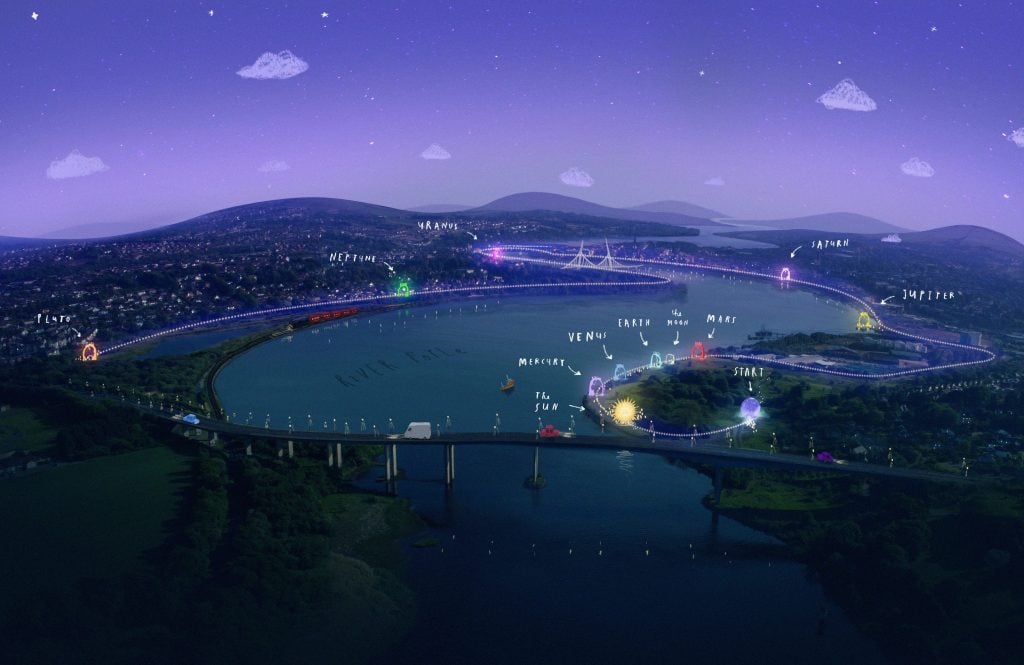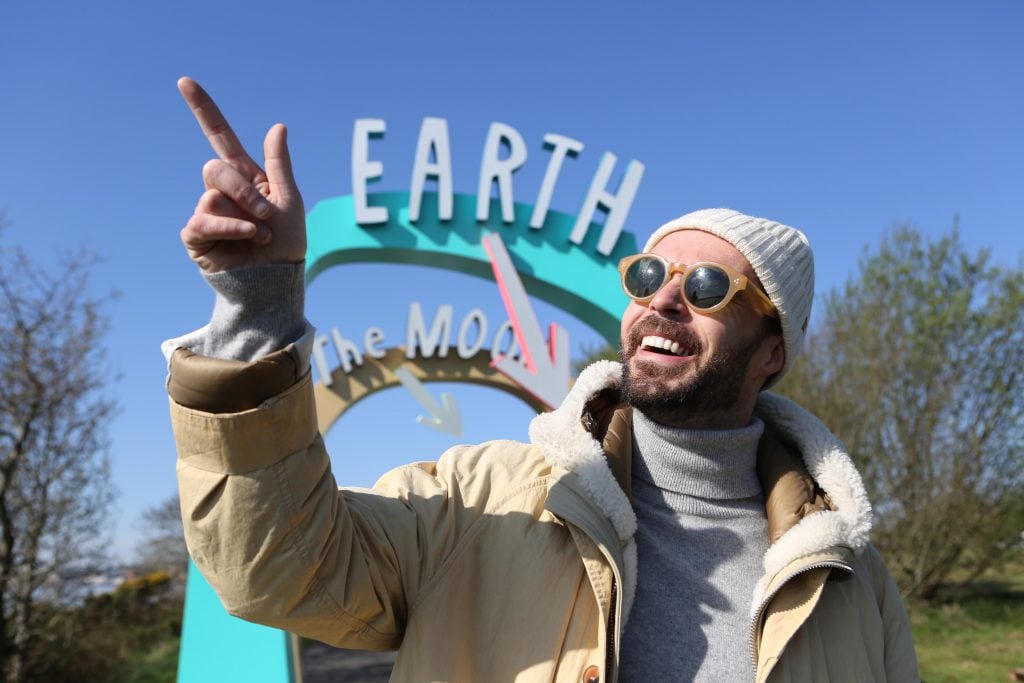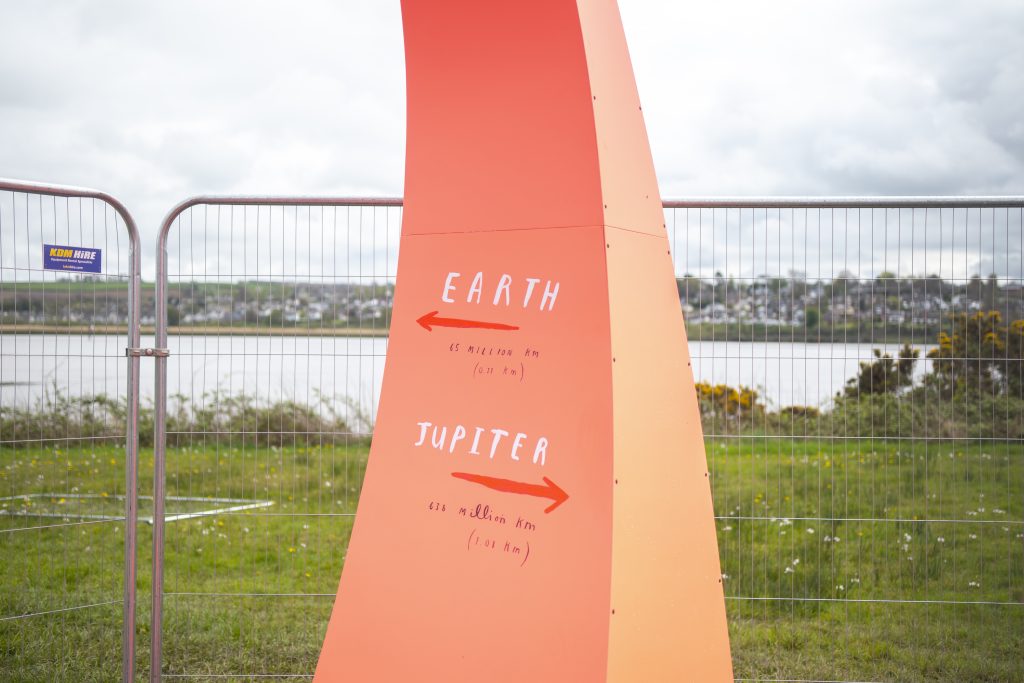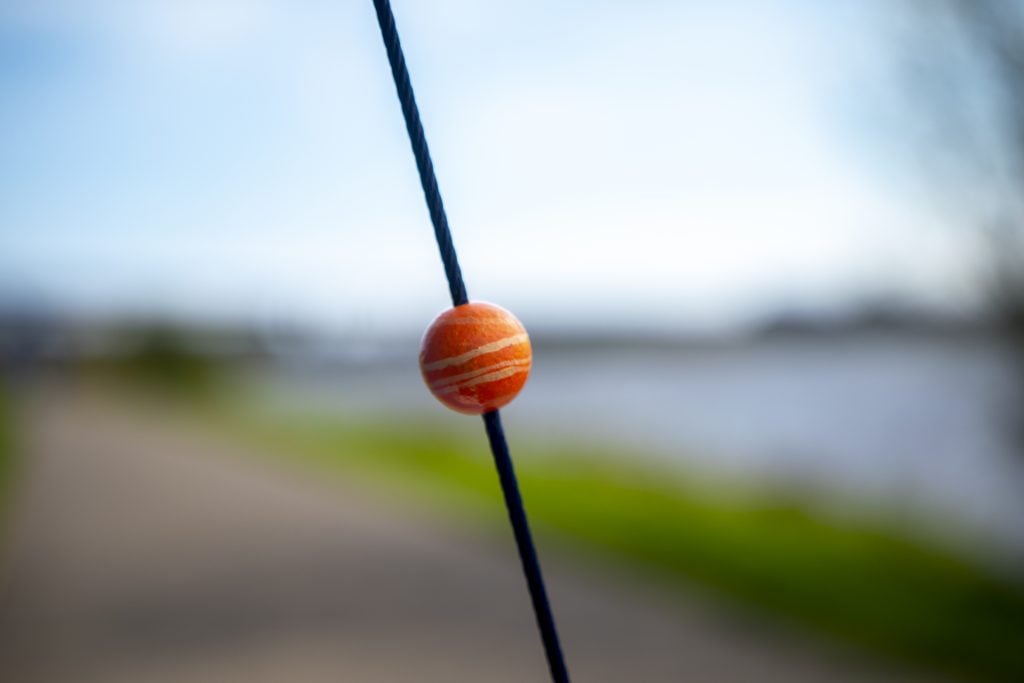Art & Tech
A Scale Model of the Solar System Covering Six Miles of Terrain Shows Just How Puny and Fragile the Earth Really Is
Artist Oliver Jeffers wants us to acknowledge that we are alone in space.

Artist Oliver Jeffers wants us to acknowledge that we are alone in space.

Amah-Rose Abrams

Artist Oliver Jeffers has unveiled the latest iteration of his massive sculpture, Our Place in Space, a six-mile facsimile of the solar system that stresses just how small we really are.
The work, on view now in Derry, Northern Ireland before it makes stops in Belfast, Cambridge, and North Down in Ireland, is a scenic walkable trail that can be navigated with an accompanying app and soundtrack.
Our Place in Space, previously shown at the High Line Park in New York, highlights that even when massively reduced in size, the solar system still feels very large—and the distances between the planets are far.
The Earth, which stands out decorated with the words “Us” and “Them,” is shown as a comment on the fact that we’re all one human race floating through the universe, the artist said.

Oliver Jeffers at Our Place in Space (2022). Photo © Lorcan Doherty
“As far as we can tell, there are no other sentient lifeforms out there,” Jeffers told Artnet News. “This the only place that stories have ever been told, as far as we know. So in some ways, this is the center of the universe.”
“I’m trying to point out just how fragile this is, this beautiful accident of life here on this little planet. This is something worth protecting, rather than being taken for granted.”

Oliver Jeffers, Our Place in Space (2022). Photo Courtesy © Lorcan Doherty
“We actually have solutions to all of the climate problems, but we’re not united behind them,” Jeffers added.
Collaborating with astrophysicist Stephen Smartt, Jeffers mapped out the scale and size of the planets (and the sun and the distances between them) to produce the artwork.
It is also inspired by the phenomenon space travelers have described known as the Overview Effect, in which astronauts have noted the odd sensation of looking down upon the tiny blue marble of Earth.

Oliver Jeffers, Our Place in Space (2022). Photo Courtesy © Lorcan Doherty
Exhibiting Our Place in Space in Ireland and Northern Ireland is especially important to Jeffers, who grew up during the Troubles, when civil unrest rocked the British region.
“This is about a sense of perspective and community more than anything else,” he said. “The simple reality is that we alone in the universe have created this problem, and we alone in the universe can solve it.”